It implicates 1 the formation of a hybrid gene at the breakpoint, and also, 2 gain in Xp11pter sequences, and loss of heterozygocity in 11q25qter, with possible implications Hybrid/Mutated GeneBreakpoint for translocation to form NONOTF, PSFTF and ASPSCR1TF oncogenes 2 Keywords Disease i Protooncogene Organismspecific databases DisGeNET i 7030 MalaCards i TF OpenTargets i ENSG Orphanet i , Alveolar soft tissue sarcomaA total of five TF gene fusions (PRCCTF, ASPSCR1TF, SFPQTF, NONOTF, and CLTCTF) and one TFEB gene fusion (MALAT1TFEB) have been identified in RCC tumours and characterized at the mRNA transcript level A multitude of molecular pathways welldescribed in carcinogenesis are regulated in part by TF or TFEB proteins, including

Rt Pcr Findings Identification Of The Aspscr1 Aspl Tfe3 Fusion Download Scientific Diagram
Aspscr1-tfe3
Aspscr1-tfe3-Soft Tissues Alveolar soft part sarcoma with t (X;17) (p11;q25) ASPSCR1TF The histogenesis of this tumour is still unknown, despite immunohistochemestry studies and electron microscopy It may have a myogenic origin, and might be a variant of rhabdomyosarcoma Rare tumour represents less than 1% of soft tissues sarcomas of adults and 12Up to12%cash backIn addition to ASPSCR1 and PRCC, whole transcriptome analyses have allowed us to detect less common subtypes including SFPQTF, NONOTF, and MED15TF Even though morphological differences between these subtypes have been characterized, it is difficult for pathologists to predict TF fusion partners from



2
Alveolar soft part sarcoma (ASPS) is a rare soft tissue tumor of unknown histogenesis generally characterized by the der (17)t (X;17) (p112;q25) translocation which results in the ASPSCR1TF gene fusion Primary ASPS of the thyroid gland has not yet been reported During oncology followup for breast cancer, a pulmonary nodule and thyroidThe ASPSCR1/TF fusion replaces the Nterminal portion of TF by the fused ASPSCR1 sequences, while retaining the TF DNAbinding domain, implicating transcriptional deregulation in the pathogenesis of ASPS Heimann et al (01) identified the ASPSCR1 gene, which they called RCC17, partnered with TF in two 5yearold Belgian girls ofContext PubMed ASPSCR1 Title/Abstract AND TF Title/Abstract AND fusion Title/Abstract Functional or gene categories assigned by FusionGDB annotation Oncogene involved fusion gene, inframe and retained their domain * DoF score (Degree of Frequency) = # partners X # break points X # cancer types
Aims Alveolar soft part sarcoma (ASPS) is a rare soft tissue tumour with unique morphology and a recurrent, non‐reciprocal translocation der(17)t(X;17)(p112;q25) leading to the fusion of ASPSCR1 (also known as ASPL) to the transcription factor TF Although diagnosis is straightforward in classical cases, tumours with atypical morphological features may be difficultThe ASPSCR1TF Fusion/Translocation FISH Probe Kit is designed to detect rearrangements involving the human ASPSCR1 and TF genes located on chromosome bands 17q253 and Xp1123, respectively Fusion of ASPSCR1 – also known as TUG, ASPL, ASPS, RCC17, UBXD9, UBXN9 or ASPCR1 – with the TF gene – also known as TFEA,ASPSCR1TF alveolar soft part sarcoma Pubmed 17 ASPSCR1TF ASPSCR1TF Adenocarcinoma, Alveolar soft part sarcoma, renal cell carcinoma Pubmed
A fusion partner was identified in 53/60 (%) cases, including 18 SFPQ (PSF), 16 PRCC, 12 ASPSCR1 (ASPL), 6 NONO, and 1 DVL2 We provide the first morphologic description of the NONOTF RCC, which frequently demonstrates subnuclear vacuoles leading to distinctive suprabasal nuclear palisadingBased on morphologic features (nested pattern) and the above IHC results including strong TF expression, ASPS was a strong consideration Although fluorescence in situ hybridization results were positive for TF gene rearrangement, the specific TF/ASPSCR1 rearrangement (X17Another tumor, a rare subset of papillary renal cell carcinoma (RCC) with a distinctive pathologic morphology, has rearrangements of TF with ASPSCR1 or other fusion partner genes This tumor predominantly affects children and young adults, presents at an advanced stage but with an indolent clinical course, and is a distinct entity in the




New Aspscr1 Tfe3 Renal Cell Carcinomas With T X 17 P11 Q25 A E H Download Scientific Diagram
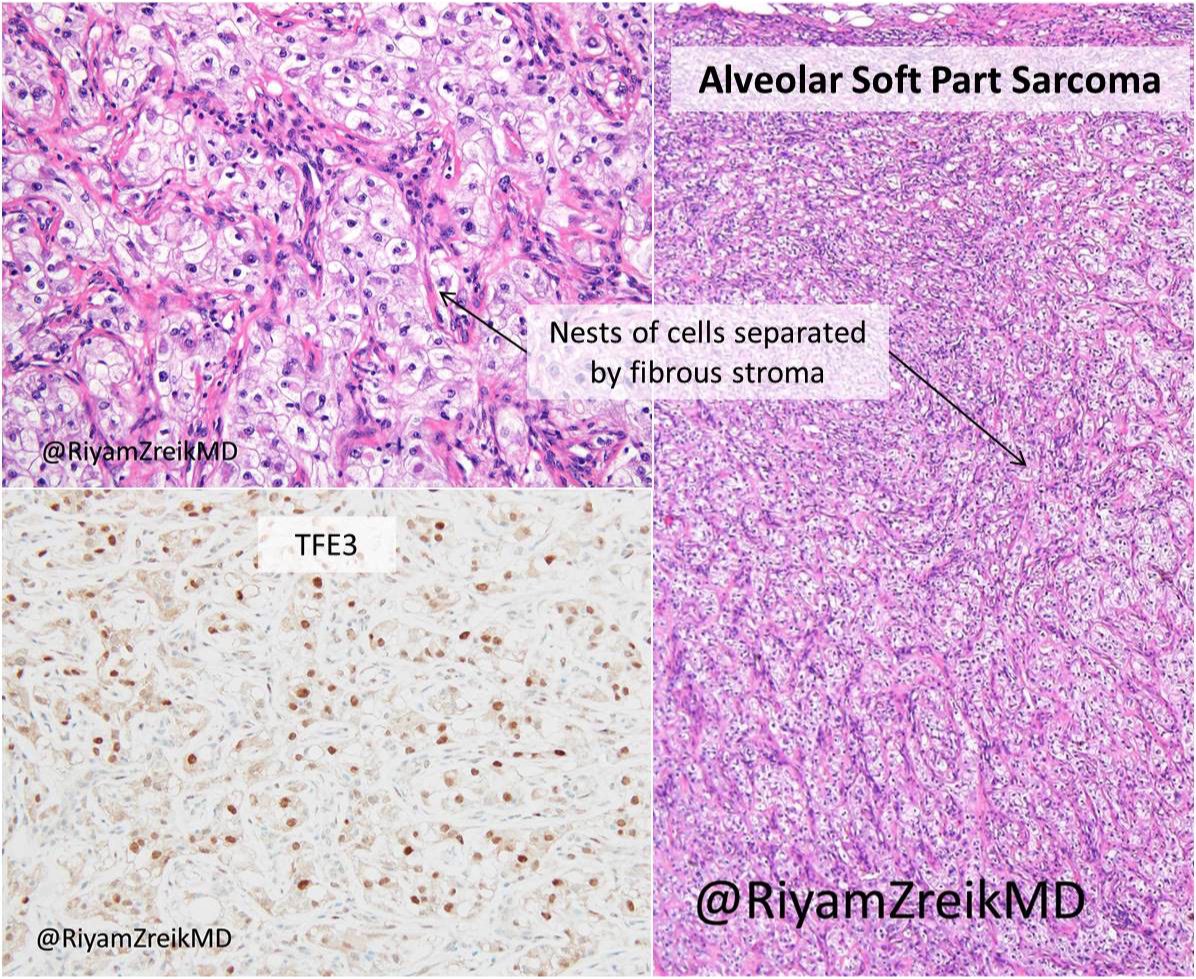



Texas Soc Of Pathol Alveolar Soft Part Sarcoma Is A Rare Tumor Of Deep Soft Tissue Characterized By Aspscr1 Tfe3 Fusion Aspscr1 Alveolar Soft Part Sarcoma Critical Region 1 Bstpath
The ASPSCR1TF and ASPSCR1TFEB but not ASPSCR1TFEC and ASPSCR1MITF induced sarcoma The results suggest the presence of TF/TFEBspecific cofactors and mechanisms for tumorigenesis In order to identify such novel cofactors and functional motifs, human ASPS cellnuclear extract was incubated with TF or MITF proteins and TF or MITFDisease ASPSCR1/TF renal cell carcinomas harbor the same gene fusion as alveolar soft part sarcoma, but belong to the family of Xp11 translocation RCC Xp11 translocation renal cell carcinoma (RCCs) harbor gene fusions involving TF transcription factor The The t (6;11) RCCs harbor a specific MALAT1 (Alpha) TFEB gene fusionAims Alveolar soft part sarcoma (ASPS) is a rare soft tissue tumour with unique morphology and a recurrent, nonreciprocal translocation der(17)t(X;17)(p112;q25) leading to the fusion of ASPSCR1 (also known as ASPL) to the transcription factor TF Although diagnosis is straightforward in classical cases, tumours with atypical morphological features may be difficult to classify solely on




The Fusion Oncogene Aspscr1 Tfe3 Directs Epigenetic Induced Autophagy In Alveolar Soft Part Sarcoma Barrott 19 The Faseb Journal Wiley Online Library




Alveolar Soft Part Sarcoma Of The Bladder With Aspscr1 Tfe3 Gene Fusion As A Secondary Malignancy Sciencedirect
Even our data showed that NONOTF RCC patients had a longer survival than ASPSCR1TF RCC and PRCCTF RCC in a short time followup study However, there was a case at the pT1aM0N0 stageOur objective was to identify the direct targets of ASPSCR1TF and how these targets confer resistance to doxorubicin The human cell lines ASPS1 and FUUR1, as well as mouse tumors driven by expression of ASPSCR1TF were subjected to nuclear fractionation and chromatin immunoprecipitation using antibodies against ASPSCR1 and RNAPol2ASPSCR1TF fusion protein may interfere with or obviate the normal activation or dimerization functions of TEF3 to the extent that normal transcription is deranged TEF3 may bind an alternative transcription factor, leading to aberrant transcriptional programs or simply homodimerize in the




Aspscr1 Tfe3 Fusion Translocation Fish Probe Kit Cytotest
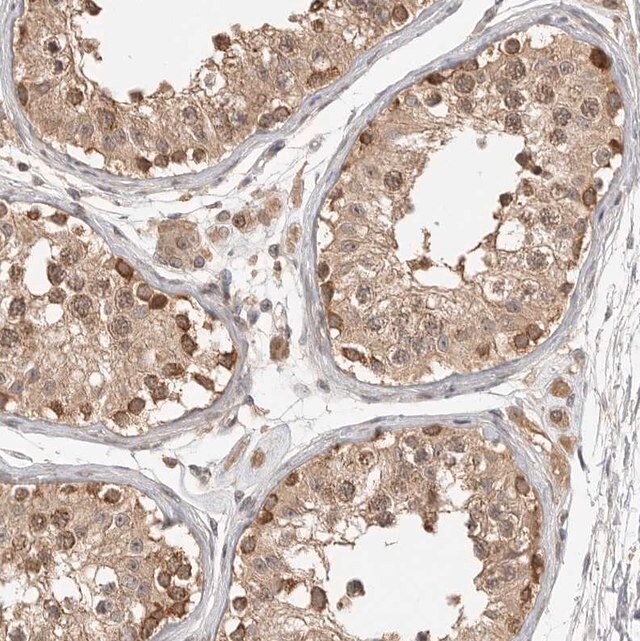



Anti Aspscr1 Antibody Produced In Rabbit Prestige Antibodies Powered By Atlas Antibodies Affinity Isolated Antibody Buffered Aqueous Glycerol Solution
ASPSCR1TF In order to characterize the fusion gene associated with ASPS and its role in sarcomagenesis, we created a mouse allele designed to express ASPSCR1TF conditionally Briefly, the Rosa26LSLAT3 allele was generated by isolating the type 2 ASPSCR1TF fusion gene transcript from total RNA obtained from a human ASPSSignificance By conditionally expressing in mice the fusion gene ASPSCR1TF from human alveolar soft part sarcoma (ASPS), we generated a model that recapitulates the human tumor histologically and by expression profile, enabling study of the conditions supportive of tumor development Mouse tumors demonstrated angiogenic gene expression in the frank absence ofOncogenic rearrangements of the TF transcription factor gene are found in two distinct human cancers These include ASPSCR1TF in all cases of alveolar soft part sarcoma (ASPS) and ASPSCR1TF, PRCCTF, SFPQTF and others in a subset of paediatric and adult RCCs Here we examined the functi



1
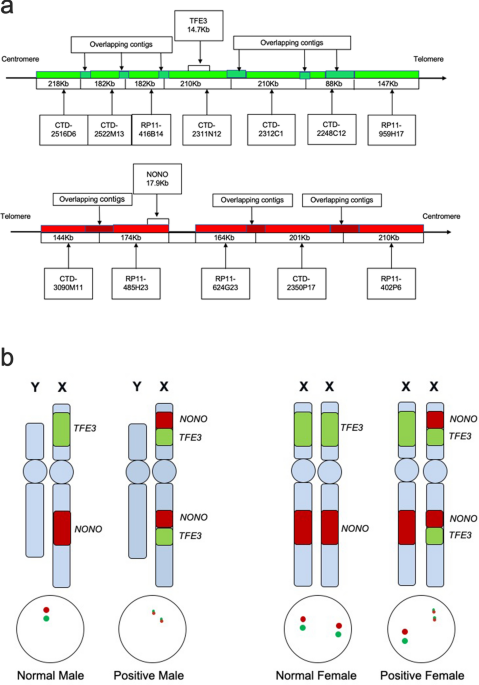



The Suitability Of Nono Tfe3 Dual Fusion Fish Assay As A Diagnostic Tool For Nono Tfe3 Renal Cell Carcinoma Scientific Reports
Plasmid construction Nterminal FLAGtagged ASPSCR1TF was introduced into both the pMYsIRESGFP and pMYsIRESLuc vectors The fulllength ASPSCR1TF was cloned from a human ASPS case Artificial chimeric ASPSCR1 fusions between ASPSCR1 and TFEB, TFEC, or MITF were also generated by twostep PCR using primers encompassing both ASPSCR1 andAlveolar soft part sarcoma (ASPS) is an exceptionally rare nonrhabdomyosarcomatous soft tissue sarcoma (NRSTS), characterized by the translocation t(X;17) p(112;q25) This translocation results in the chimeric ASPSCR1TF transcription factor whichAmy Ruffle, Malcolm Cameron, Nicolaas Jonas, Samantha Levine, Caroline Mills, C Elizabeth Hook, Matthew J Murray, Lingual Alveolar Soft Part Sarcoma in a 1YearOld Infant Youngest Reported Case With Characteristic ASPSCR1TF Fusion, Pediatric and Developmental Pathology, /, (), (19)




Angiogenesis Promoting Gene Patterns In Alveolar Soft Part Sarcoma Clinical Cancer Research




Technique For Differentiating Alveolar Soft Part Sarcoma From Other Tumors In Paraffin Embedded Tissue Comparison Of Immunohistochemistry For Tfe3 And Cd147 And Of Reverse Transcription Polymerase Chain Reaction For Aspscr1 Tfe3 Fusion Transcript
The ASPSCR1TF Fusion/Translocation FISH Probe Kit is designed to detect rearrangements involving the human ASPSCR1 and TF genes located on chromosome bands 17q253 and Xp1123, respectively Fusion of ASPSCR1 – also known as TUG, ASPL, ASPS, RCC17, UBXD9, UBXN9 or ASPCR1 – with the TF gene – also known as TFEA, RCCP2, RCCX1 orThe present model also enabled the evaluation of TFE/MITF family transcription factor function, which demonstrated that ASPSCR1TFEB possessed definitive albeit less marked oncogenic activity than that of ASPSCR1TF Collectively, our mouse model provides a tool to understand oncogenic, angiogenic, and metastatic mechanisms of ASPSAlveolar soft part sarcoma is characterized by a der(17)(X;17)(p112;q25) translocation resulting in an ASPSCR1TF gene fusion, the distinctive epithelioid hemangioendothelioma subset harbors a t(X;11)(p112;q13) translocation resulting in a YAP1TF gene
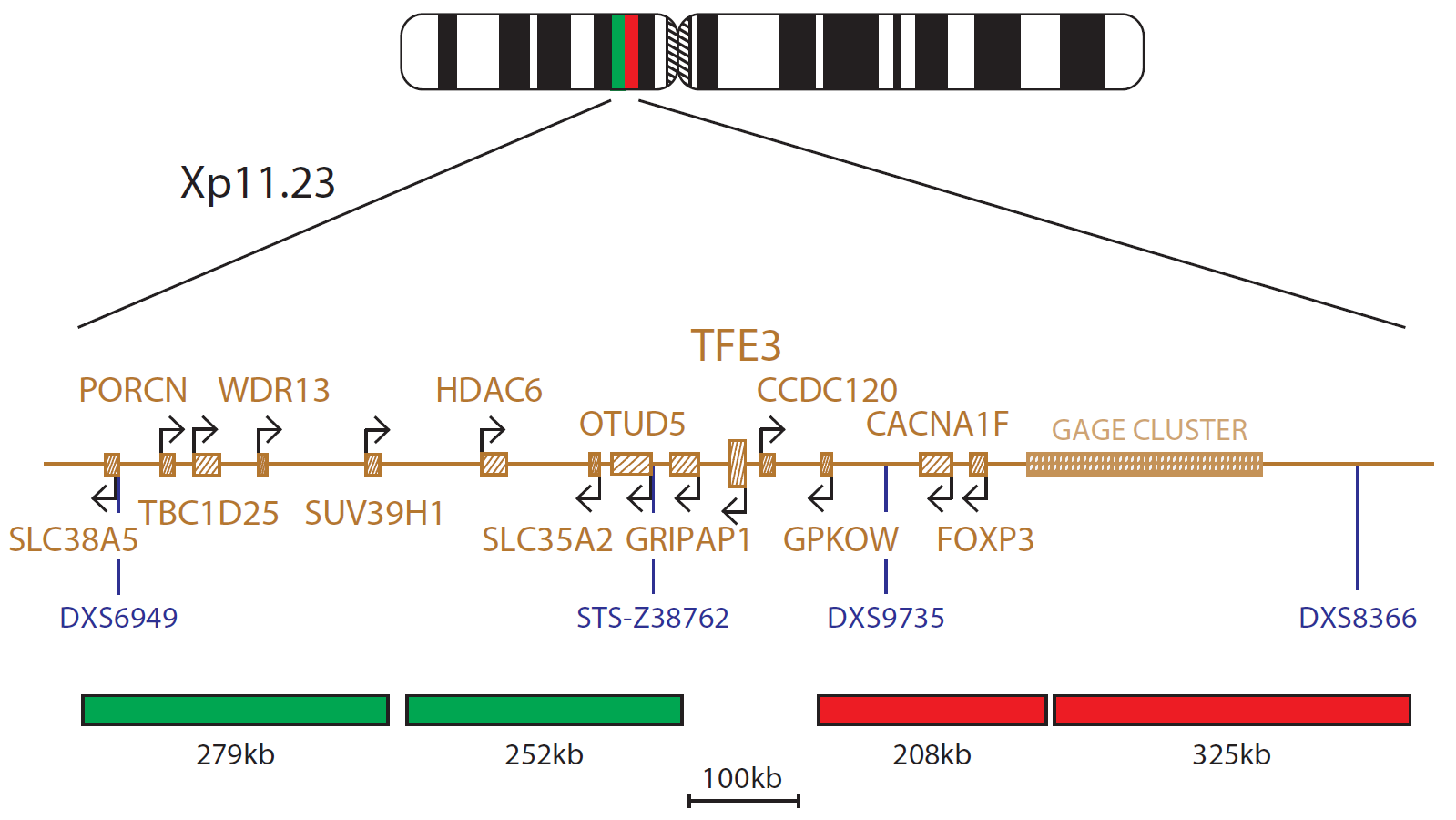



Cytocell Tfe3 Breakapart Fish Probe Ogt




Google Image Result For Http Www Biologydisease Com Images Kidney Xp11 2 Tran Renal Cell Renal Cell Carcinoma Renal
ASPSCR1TF is the driving oncogenic feature of this tumor type;ASPSCR1TF fusion and several somatic copy number alterations, including the loss of 22q, are associated with aggressive features and poor outcomes Apart from tumors with MED15TF fusionAlveolar soft part sarcoma with ASPSCR1 TF fusion Cytogenetics der (X)t (X;17) (p11;q25) is consistently involved;




Aspscr1 Gene Genecards Aspc1 Protein Aspc1 Antibody




Genetically Confirmed Aspscr1 Tfe3 Renal Cell Carcinomas Download Table
By conditionally expressing in mice the fusion gene ASPSCR1TF from human alveolar soft part sarcoma (ASPS), we generated a model that recapitulates the human tumor histologically and by expression profile, enabling study of the conditions supportive of tumor development Mouse tumors demonstrated angiogenic gene expression in the frank absence of hypoxia and wereASPSCR1TF as well as of key target molecules in ASPS vasculogenesis remains to be addressed Toward this end, the establishment of a reliable animal model that is useful in understanding the tumorigenic and vasculogenic mechanisms of human ASPS is desired It has recently been reported that conditional ASPSCR1TFTFF Alveolar softpart sarcoma (ASPS) is a rare malignant tumor typically occurring in patients in their s to 30s within the muscle and deep tissues of the extremities ASPS is slow growing and refractory to chemotherapy with a propensity to metastasize Prolonged survival is possible even with metastasis, although the longterm diseaserelated mortality rate is high



Assets Researchsquare Com




Integrated Exome And Rna Sequencing Of Tfe3 Translocation Renal Cell Carcinoma Nature Communications
Translocation t(X;17)(p11;q25) of this gene with transcription factor TF gene results in a ASPSCR1TF fusion protein in alveolar soft part sarcoma and in renal cell carcinomas Multiple alternatively spliced transcript variants have been found provided by RefSeq, Oct 11 Gencode Transcript ENST Gencode GeneThe ASPSCR1/TF fusion replaces the Nterminal portion of TF by the fused ASPSCR1 sequences, while retaining the TF DNAbinding domain, implicating transcriptional deregulation in the pathogenesis of ASPS Ladanyi et al (01) identified major and minor splice forms of the ASPSCR1 transcript which differ by the absence or presence of a 47No fusionnegative case has ever been described Complete surgical excision, including lung metastasectomy when applicable, is the primary treatment, with limited benefit associated with chemotherapy or radiation There has been one published case of primary ASPS in the bladder
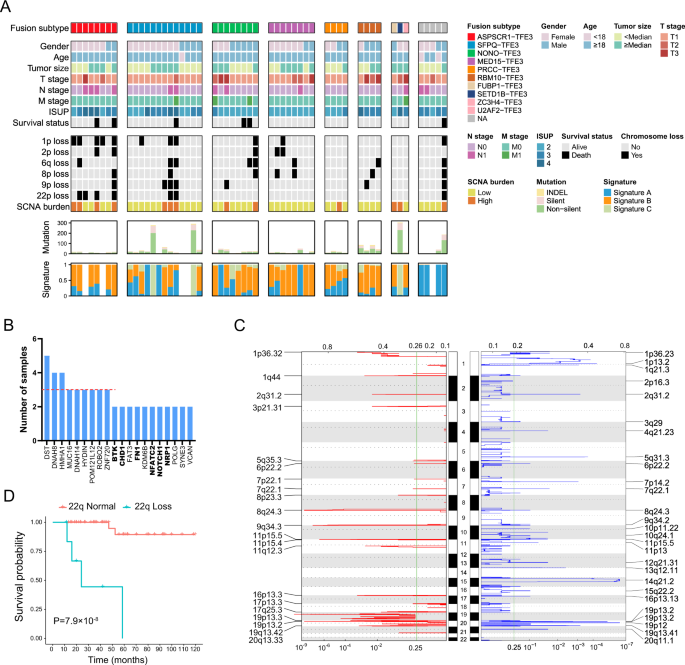



Integrated Exome And Rna Sequencing Of Tfe3 Translocation Renal Cell Carcinoma Nature Communications




Tfe3 Fusions Activate Met Signaling By Transcriptional Up Regulation Defining Another Class Of Tumors As Candidates For Therapeutic Met Inhibition Cancer Research
3 ASPSCR1 TEXT A number sign (#) is used with this entry because some cases of alveolar soft part sarcoma have been found to be caused by fusion of the ASPSCR1 () and TF () genes Description Alveolar soft part sarcoma is an unusual tumor with highly characteristic histopathology and ultrastructureAlveolar soft part sarcoma (ASPS) is an exceptionally rare nonrhabdomyosarcomatous soft tissue sarcoma (NRSTS), characterized by the translocation t(X;17) p(112;q25) This translocation results iIn this instance, the ASPSCR1TF gene product functions as a lactate transporter Strikingly, every mouse in which the gene was up regulated developed a tumor The locations of tumor, in the skull and near the eye, both represented areas of high lactate concentration In humans, this tumor occurs in skeletal muscle, also associated with high
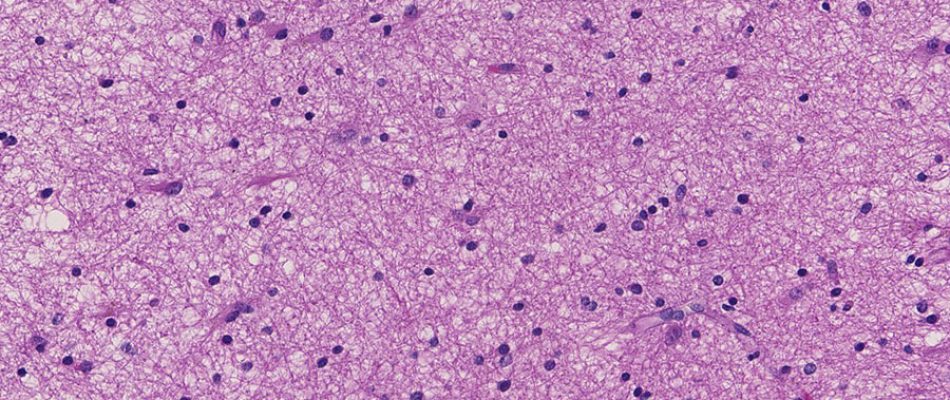



Largest Trial Ever Performed In Alveolar Soft Part Sarcoma Results Published 21 Eortc Eortc




Alveolar Soft Part Sarcomas Molecular Pathogenesis And Implications For Novel Targeted Therapies
Introduction TFtranslocation renal cell carcinoma (TFtRCC) is a rare subtype of kidney cancer, characterized by Xp112 translocations resulting in TF fusion with various partner genes To date, more than partner genes have been identified in fusions with TF, including SFPQ, ASPSCR1, NONO, PRCC, RBM10, MED15, etc Due to the variety of partners andASPS is a malignant mesenchymal tumour with an ASPSCR1TF fusion molecular signature (der(17)t(X;17)(p112;q25) translocation This results in the fusion of TF transcription factor gene at Xp112 with ASPSCR1 (also known as ASPL) at 17q25 As mentioned earlier, the same gene signature is also present in a subset of RCCs, which have aThe ASPSCR1TF gene fusion is the same gene fusion found in alveolar soft part sarcoma (ASPS), a rare pediatric neoplasm of uncertain histogenesis However, the translocation in Xp11 translocation RCC is balanced, which may contribute to the differences seen at the clinical and histopathologic levels between Xp11 translocation RCC and ASPS



2



Genatlas Sheet
When a TF rearrangement is identified, reflex testing using the TF/ASPSCR1 probe will be performed Method Name A short description of the method used to perform the test Fluorescence In Situ Hybridization (FISH)Alveolar soft part sarcoma (ASPS) is a morphologically distinctive neoplasm of unknown differentiation that bears a characteristic gene fusion involving ASPSCR1 and TFASPS can occur in the female genital tract, but is rare Eleven cases with an initial diagnosis of ASPS at female genital tract sites were evaluated for their morphologic features and immunoprofile using a panelTF is also expressed in alveolar soft part sarcoma the hallmark of which is a chromosomal rearrangement at 17q25 and Xp112 engendering an ASPSCR1–TF fusion gene Use of this antibody is an aid in the recognition of Xp11 translocation renal cell carcinoma and alveolar soft part sarcoma within the context of an antibody panel




Signaling Schematic For Asps Tumors And Novel Therapeutic Targets A Download Scientific Diagram




Aspscr1 Protein Pan Troglodytes String Interaction Network
ASPSCR1 Tether containing UBX domain for GLUT4 ( TUG) is a protein that in humans is encoded by the ASPSCR1 gene This gene is a candidate gene for alveolar soft part sarcoma (ASPS) It has been found that ASPSCR1 can undergo oncogenic rearrangement with transcription factor TF gene, creating an aberrant gene that is a strongerThese include ASPSCR1–TF in all cases of alveolar soft part sarcoma (ASPS) and ASPSCR1–TF, PRCCTF, SFPQTF and others in a subset of paediatric and adult RCCs Here we examined the functional properties of the ASPSCR1–TF fusion oncoprotein, defined its target promoters on a genomewide basis and performed a highthroughput RNAOur results demonstrate that the most sensitive marker of alveolar soft part sarcoma was the presence of the ASPSCR1TF fusion transcript Thus, detection of the ASPSCR1TF fusion transcript was considered applicable for formalinfixed, paraffinembedded tissues with superior sensitivity as compared with TF immunohistochemical staining
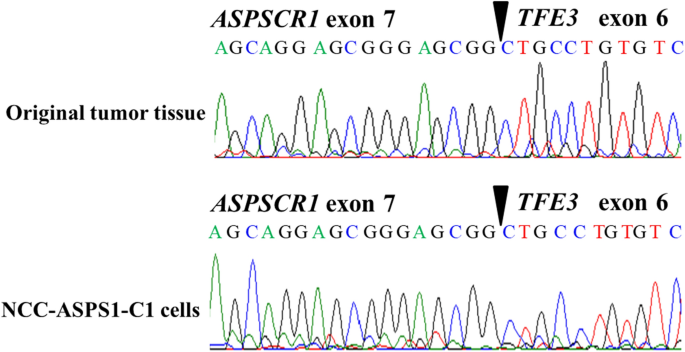



Establishment And Characterization Of Ncc Asps1 C1 A Novel Patient Derived Cell Line Of Alveolar Soft Part Sarcoma Springerlink




The T X 17 P11 25 Translocation A The Aspscr 1 Gene Is Located At Download Scientific Diagram
The ASPSCR1TF fusion was originally identified in 100% of alveolar soft part sarcomas (ASPS), a rare lung cancer variant with no known RCC association, and the SFPQTF fusion and possibly other TFfusions are also found in a subset of rare tumors known as perivascular epithelioid cell neoplasms (PEComas) 27,28 The existence ofThe TF fusion partners in the latter three neoplasms have been fairly consistent;
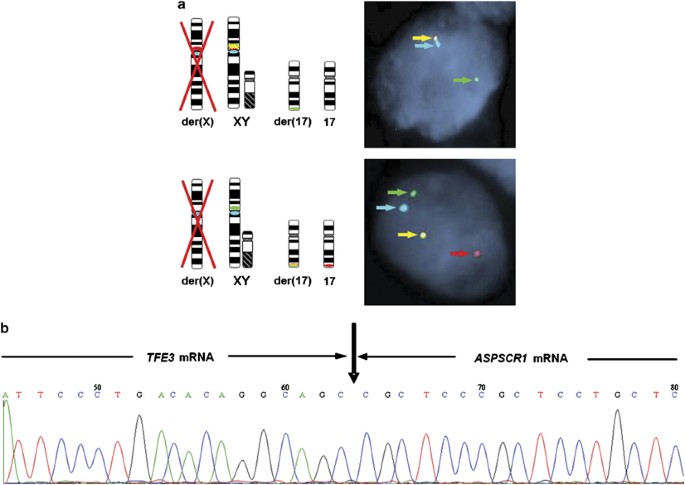



Molecular Cytogenetic Analysis For Tfe3 Rearrangement In Xp11 2 Renal Cell Carcinoma And Alveolar Soft Part Sarcoma Validation And Clinical Experience With 75 Cases Modern Pathology




Technique For Differentiating Alveolar Soft Part Sarcoma From Other Tumors In Paraffin Embedded Tissue Comparison Of Immunohistochemistry For Tfe3 And Cd147 And Of Reverse Transcription Polymerase Chain Reaction For Aspscr1 Tfe3 Fusion Transcript




Combining Integrated Genomics And Functional Genomics To Dissect The Biology Of A Cancer Associated Aberrant Transcription Factor The Aspscr1 Tfe3 Fusion Oncoprotein Kobos 13 The Journal Of Pathology Wiley Online Library




Figure 2 From Molecular Genetics And Cellular Features Of Tfe3 And Tfeb Fusion Kidney Cancers Semantic Scholar



Assets Researchsquare Com



2




Integrated Exome And Rna Sequencing Of Tfe3 Translocation Renal Cell Carcinoma Research Square



Tfe3 Transcription Factor




Neat1 Tfe3 And Kat6a Tfe3 Renal Cell Carcinomas New Members Of Mit Family Translocation Renal Cell Carcinoma Researcher An App For Academics




Comparison Of Aspscr1 Tfe3 And Prcc Tfe3 Renal Cell Carcinomas Download Table



2




Combining Integrated Genomics And Functional Genomics To Dissect The Biology Of A Cancer Associated Aberrant Transcription Factor The Aspscr1 Tfe3 Fusion Oncoprotein Kobos 13 The Journal Of Pathology Wiley Online Library




X 17 P11 Q25 Aspscr1 Tfe3 Translocation Renal Cell Carcinomas Download Scientific Diagram
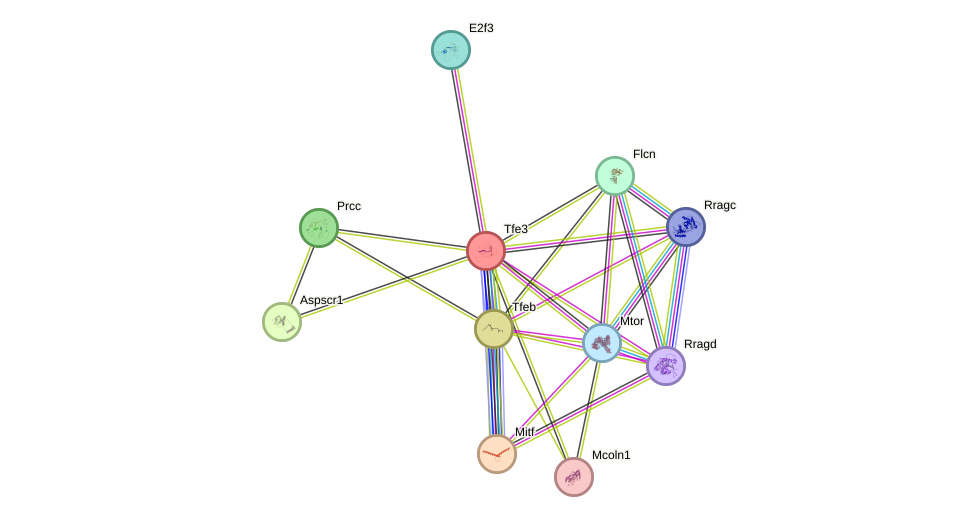



Tfe3 Protein Mouse String Interaction Network




Figure 4 Modeling Alveolar Soft Part Sarcoma Unveils Novel Mechanisms Of Metastasis Cancer Research
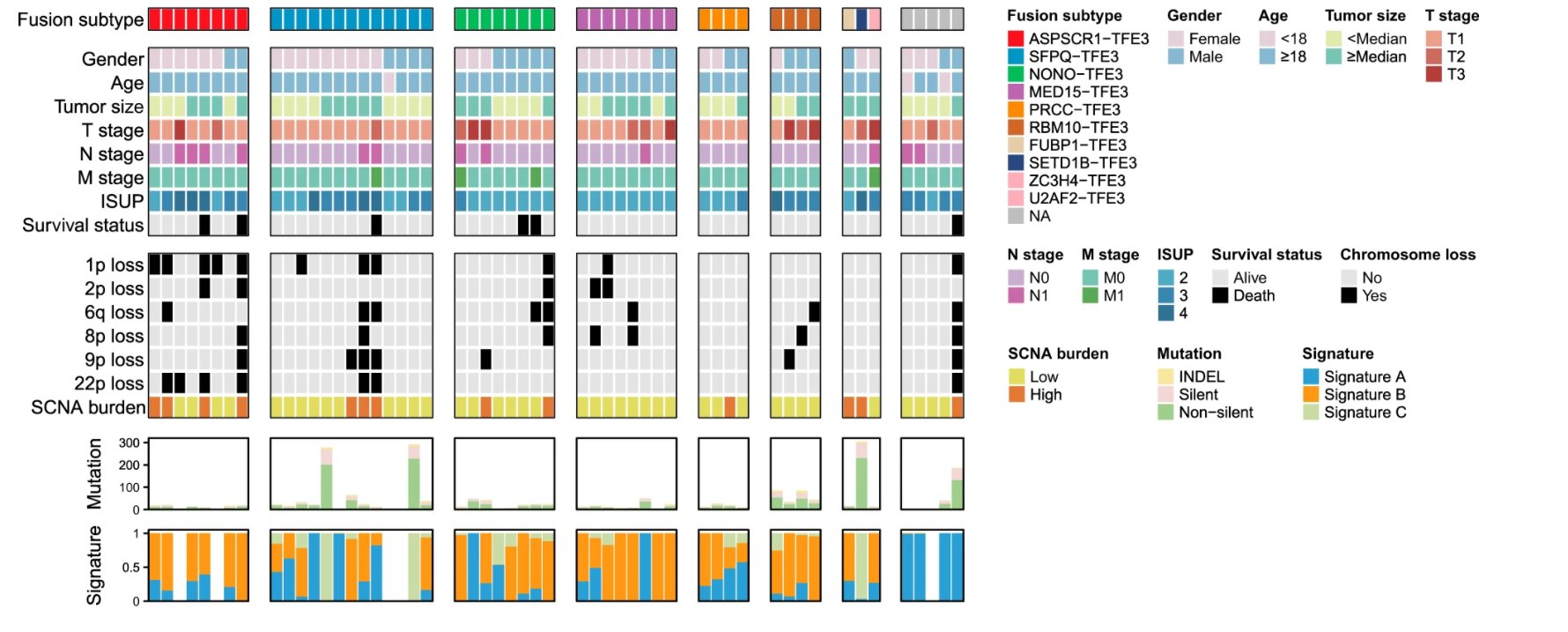



Nature Communications Study Performs Genomic And Transcriptomic Profiling Of Untreated Primary Tfe3 Translocation Renal Cell Carcinoma Tumours And Reveals Potential Therapeutic Targets Cancerresearch T Co Cwarpnbtch T Co
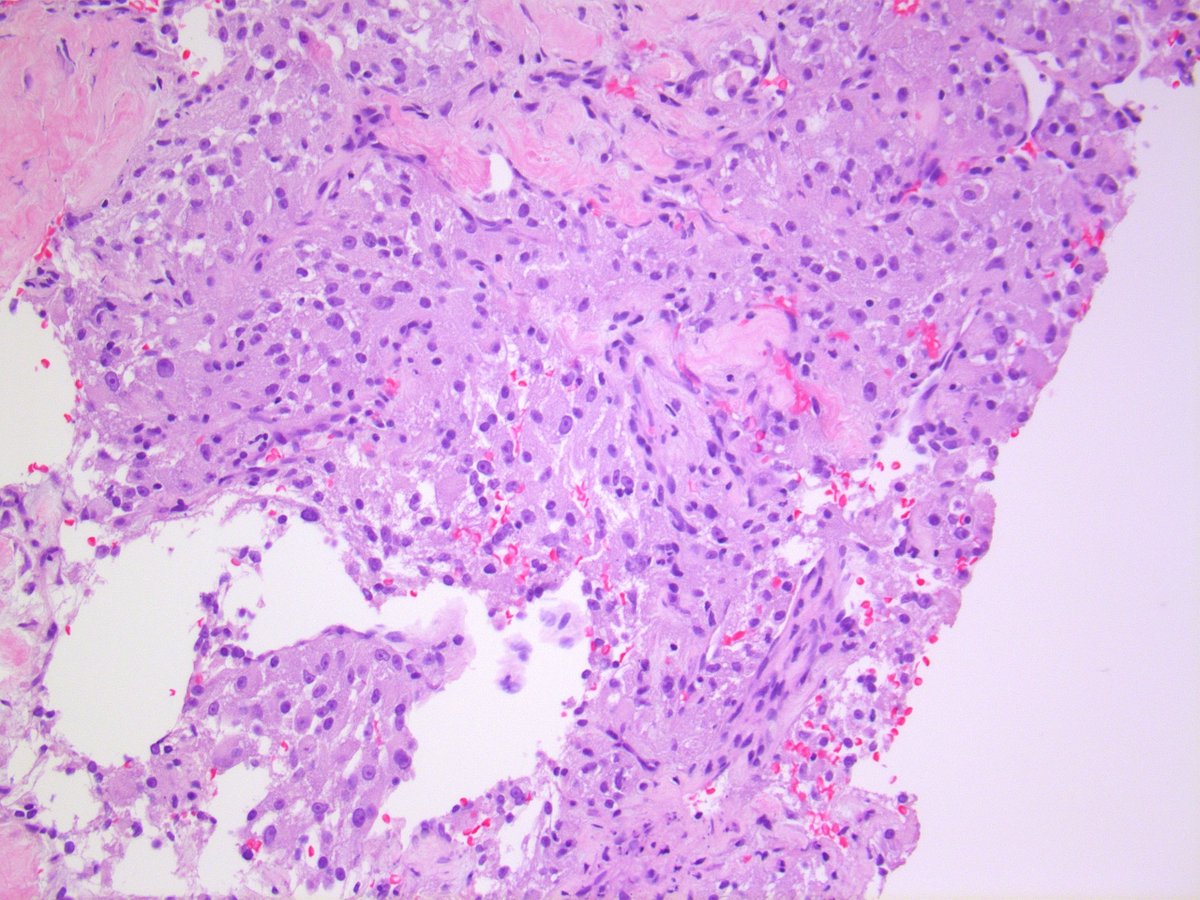



Brendan Dickson Md Alveolar Soft Part Sarcoma Ihc Tfe3 Ngs Aspscr1 Tfe3 Nb Nests Of Epithelioid Cells With Abundant Granular Cytoplasm Bland Nuclei With Macronucleoli Systemic Therapies Limited Potential Promise With Immune




Combining Integrated Genomics And Functional Genomics To Dissect The Biology Of A Cancer Associated Aberrant Transcription Factor The Aspscr1 Tfe3 Fusion Oncoprotein Kobos 13 The Journal Of Pathology Wiley Online Library
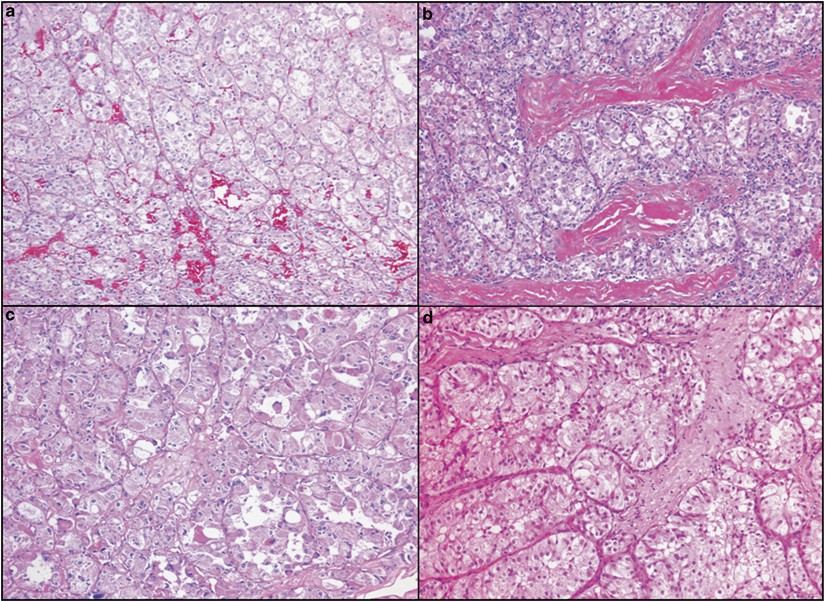



Molecular Cytogenetic Analysis For Tfe3 Rearrangement In Xp11 2 Renal Cell Carcinoma And Alveolar Soft Part Sarcoma Validation And Clinical Experience With 75 Cases Modern Pathology




Abstract B The Molecular Function Of Aspscr1 Tfe3 In Alveolar Soft Part Sarcoma Clinical Cancer Research



Kidney Renal Cell Carcinoma With T X 17 P11 Q25 Aspscr1 Tfe3




Alveolar Soft Part Sarcoma Of The Bladder With Aspscr1 Tfe3 Gene Fusion As A Secondary Malignancy Sciencedirect




Rt Pcr Findings Identification Of The Aspscr1 Aspl Tfe3 Fusion Download Scientific Diagram



Aspscr1 Tfe3 Fusion Translocation Fish Probe Kit 10 Tests Diagnostic Technology




X 17 P11 Q25 Aspscr1 Tfe3 Translocation Renal Cell Carcinomas Download Scientific Diagram




Alveolar Soft Part Sarcomas Molecular Pathogenesis And Implications For Novel Targeted Therapies
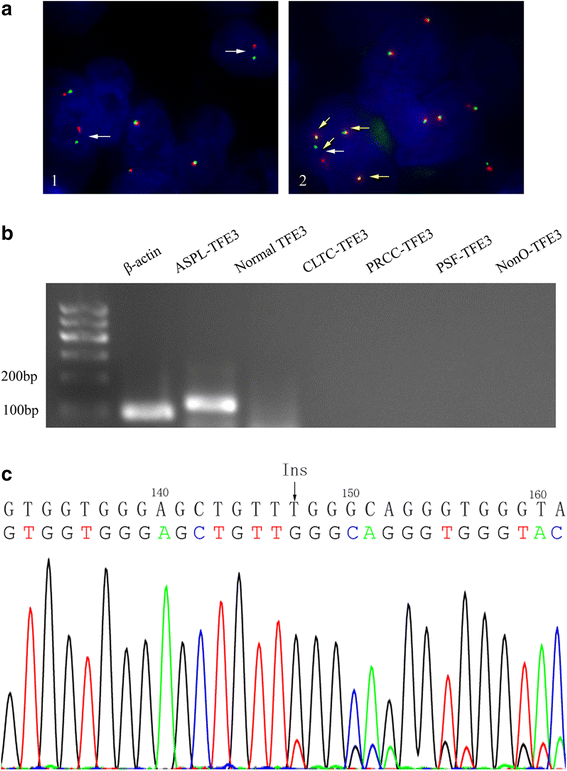



An Xp11 2 Translocation Renal Cell Carcinoma With Smarcb1 Ini1 Inactivation In Adult End Stage Renal Disease A Case Report Diagnostic Pathology Full Text



2




Combining Integrated Genomics And Functional Genomics To Dissect The Biology Of A Cancer Associated Aberrant Transcription Factor The Aspscr1 Tfe3 Fusion Oncoprotein Abstract Europe Pmc



Cancerres crjournals Org



1



2



2




Technique For Differentiating Alveolar Soft Part Sarcoma From Other Tumors In Paraffin Embedded Tissue Comparison Of Immunohistochemistry For Tfe3 And Cd147 And Of Reverse Transcription Polymerase Chain Reaction For Aspscr1 Tfe3 Fusion Transcript



2




Figure 1 From Mit Family Translocation Renal Cell Carcinoma Semantic Scholar




Rt Pcr Findings Identification Of The Aspscr1 Aspl Tfe3 Fusion Download Scientific Diagram
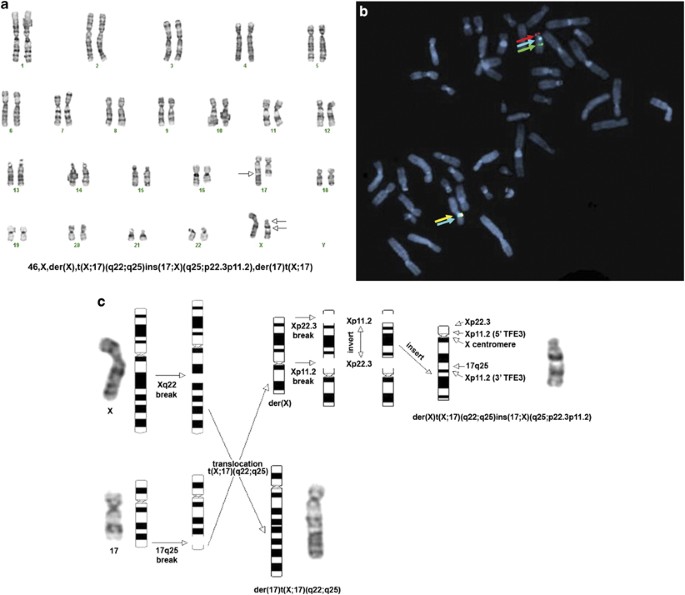



Molecular Cytogenetic Analysis For Tfe3 Rearrangement In Xp11 2 Renal Cell Carcinoma And Alveolar Soft Part Sarcoma Validation And Clinical Experience With 75 Cases Modern Pathology




Aspl Tfe3 Oncoprotein Regulates Cell Cycle Progression And Induces Cellular Senescence By Up Regulating P21 Sciencedirect



Kidney Renal Cell Carcinoma With T X 17 P11 Q25 Aspscr1 Tfe3



Tfe3 Transcription Factor




Aspl Tfe3 Oncoprotein Regulates Cell Cycle Progression And Induces Cellular Senescence By Up Regulating P21 Sciencedirect
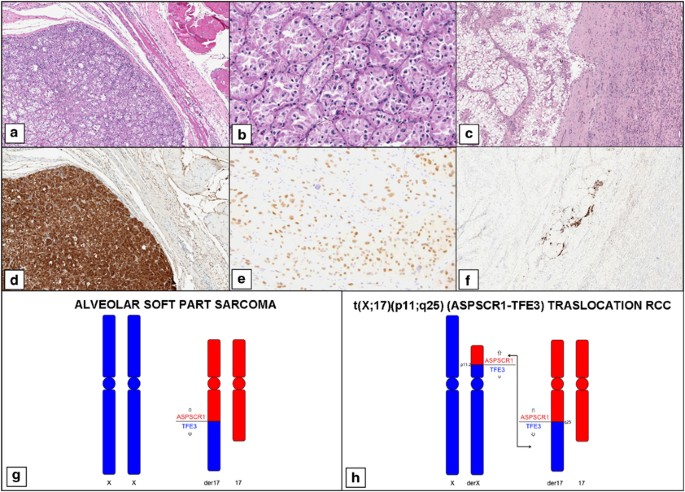



Differential Expression Of Cathepsin K In Neoplasms Harboring Tfe3 Gene Fusions Modern Pathology




The T X 17 P11 25 Translocation A The Aspscr 1 Gene Is Located At Download Scientific Diagram



Kidney Renal Cell Carcinoma With T X 17 P11 Q25 Aspscr1 Tfe3



Xp11 Translocation Renal Cell Carcinoma




New Aspscr1 Tfe3 Renal Cell Carcinomas With T X 17 P11 Q25 A E H Download Scientific Diagram



Tfe3 Transcription Factor




Molecular Landscape In Alveolar Soft Part Sarcoma Implications For Molecular Targeted Therapy Sciencedirect
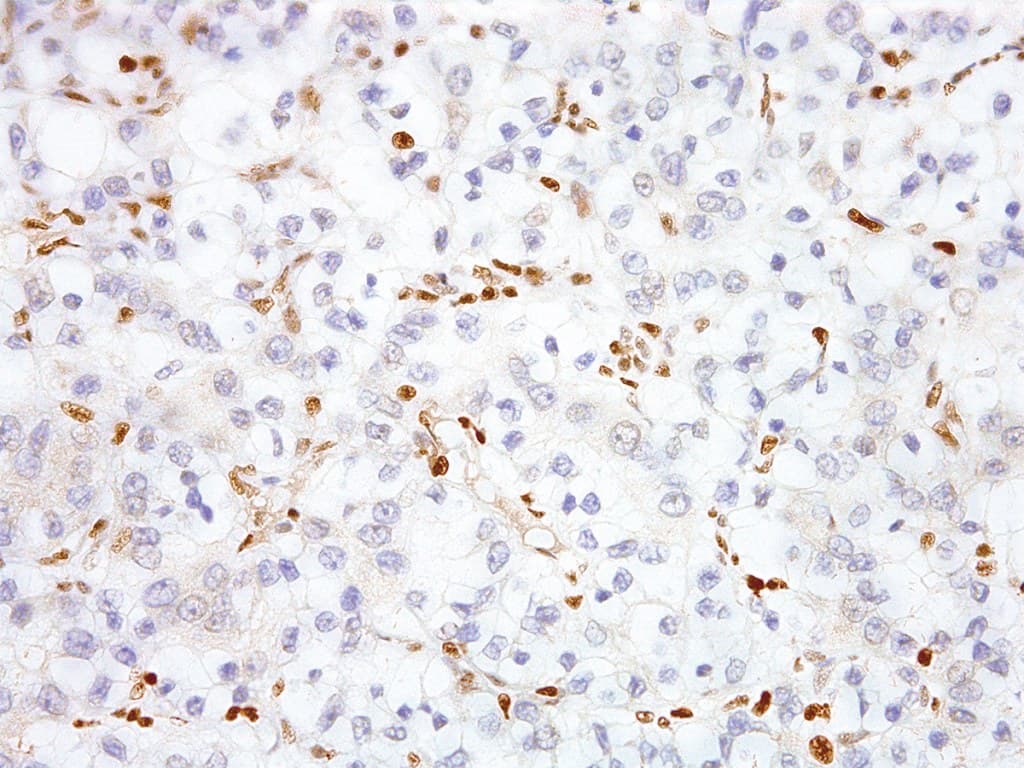



Anti Tfe3 Ce Ivd For Ihc Pediatric Pathology Clinisciences




Combining Integrated Genomics And Functional Genomics To Dissect The Biology Of A Cancer Associated Aberrant Transcription Factor The Aspscr1 Tfe3 Fusion Oncoprotein Kobos 13 The Journal Of Pathology Wiley Online Library




Tfeb And Tfe3 Linking Lysosomes To Cellular Adaptation To Stress Abstract Europe Pmc




Gene Of The Month Tfe 3 Journal Of Clinical Pathology




Tfe3 Fusions Activate Met Signaling By Transcriptional Up Regulation Defining Another Class Of Tumors As Candidates For Therapeutic Met Inhibition Cancer Research




New Aspscr1 Tfe3 Renal Cell Carcinomas With T X 17 P11 Q25 A E H Download Scientific Diagram




Molecular Landscape In Alveolar Soft Part Sarcoma Implications For Molecular Targeted Therapy Sciencedirect




Genetically Confirmed Aspscr1 Tfe3 Renal Cell Carcinomas Download Table




Validation Of Potential Therapeutic Targets In Alveolar Soft Part Sarcoma An Immunohistochemical Study Utilizing Tissue Microarray Lazar 09 Histopathology Wiley Online Library




Marc Ladanyi Yes Most Alveolar Soft Part Sarcomas Aspscr1 Tfe3 Fusion Would Be Considered To Fall In The Simple Reciprocal Translocation Group Blast From The Past Some Of Our Work




Pdf Tfe3 Fusions Activate Met Signaling By Transcriptional Up Regulation Defining Another Class Of Tumors As Candidates For Therapeutic Met Inhibition Semantic Scholar




Alveolar Soft Part Sarcomas Molecular Pathogenesis And Implications For Novel Targeted Therapies




Genomics Morphoproteomics And Treatment Patterns Of Patients With Alveolar Soft Part Sarcoma And Response To Multiple Experimental Therapies Molecular Cancer Therapeutics




Modeling Alveolar Soft Part Sarcoma Unveils Novel Mechanisms Of Metastasis Cancer Research




Positive Tumor Response To Combined Checkpoint Inhibitors In A Patient With Refractory Alveolar Soft Part Sarcoma A Case Report Jco Global Oncology
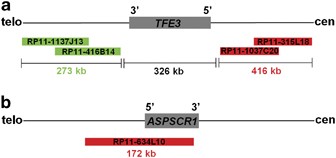



Molecular Cytogenetic Analysis For Tfe3 Rearrangement In Xp11 2 Renal Cell Carcinoma And Alveolar Soft Part Sarcoma Validation And Clinical Experience With 75 Cases Modern Pathology
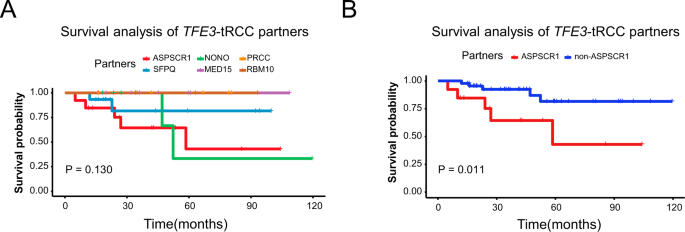



Integrated Exome And Rna Sequencing Of Tfe3 Translocation Renal Cell Carcinoma Nature Communications




Activity And Safety Of Crizotinib In Patients With Alveolar Soft Part Sarcoma With Rearrangement Of Tfe3 European Organization For Research And Treatment Of Cancer Eortc Phase Ii Trial Create Annals



Cytotest Com
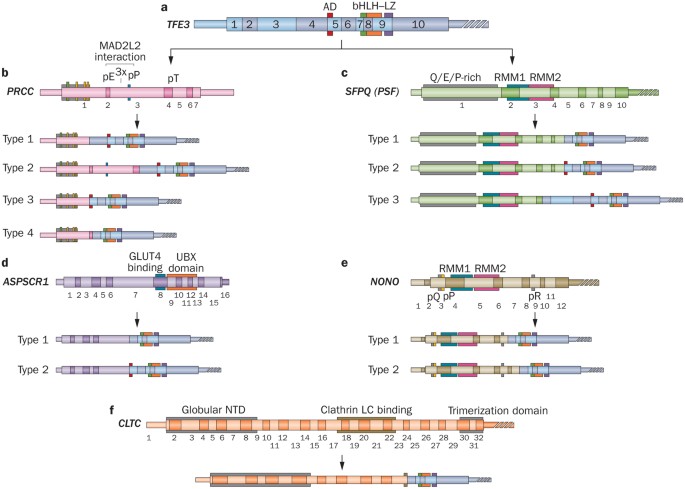



Molecular Genetics And Cellular Features Of Tfe3 And Tfeb Fusion Kidney Cancers Nature Reviews Urology
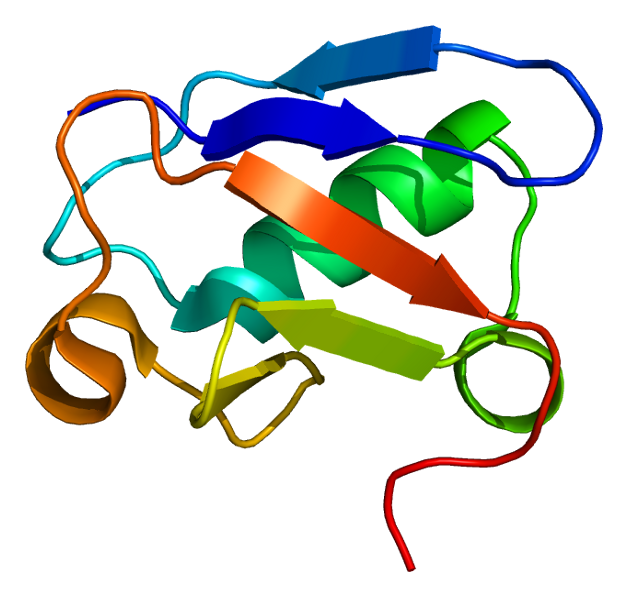



Aspscr1 Wikipedia



Aspscr1 Alveolar Soft Part Sarcoma Critical Region 1



Aspscr1 Tfe3 Fusion Translocation Fish Probe Kit 10 Tests Diagnostic Technology
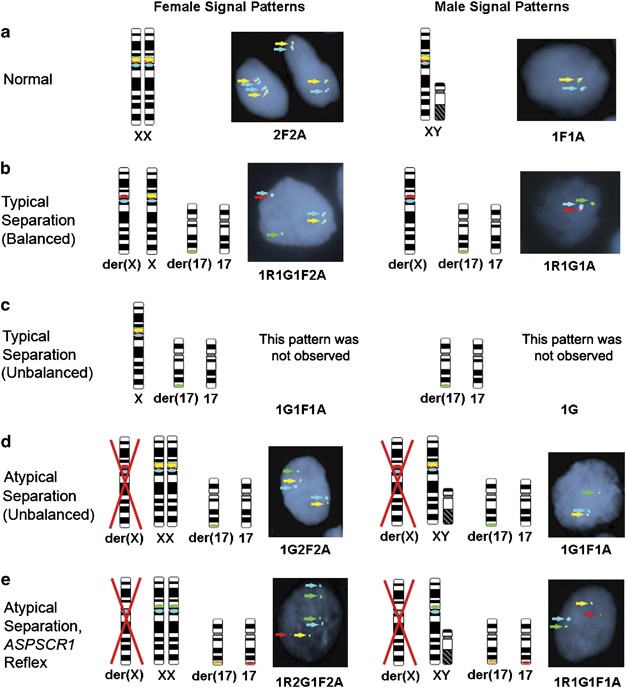



Molecular Cytogenetic Analysis For Tfe3 Rearrangement In Xp11 2 Renal Cell Carcinoma And Alveolar Soft Part Sarcoma Validation And Clinical Experience With 75 Cases Modern Pathology



Psammoma Bodies
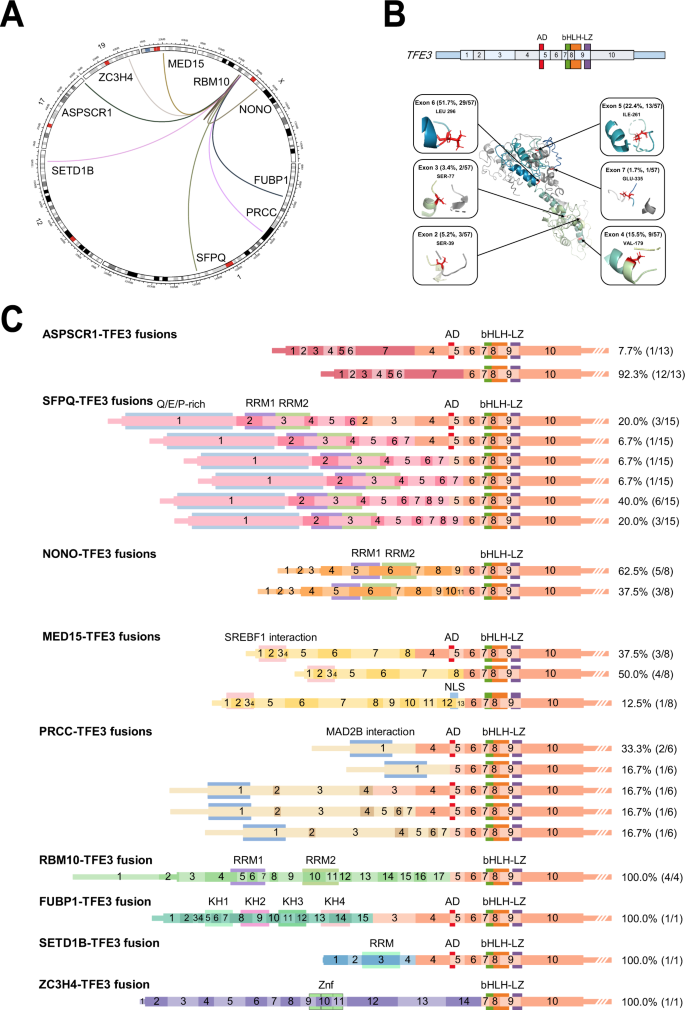



Integrated Exome And Rna Sequencing Of Tfe3 Translocation Renal Cell Carcinoma Nature Communications
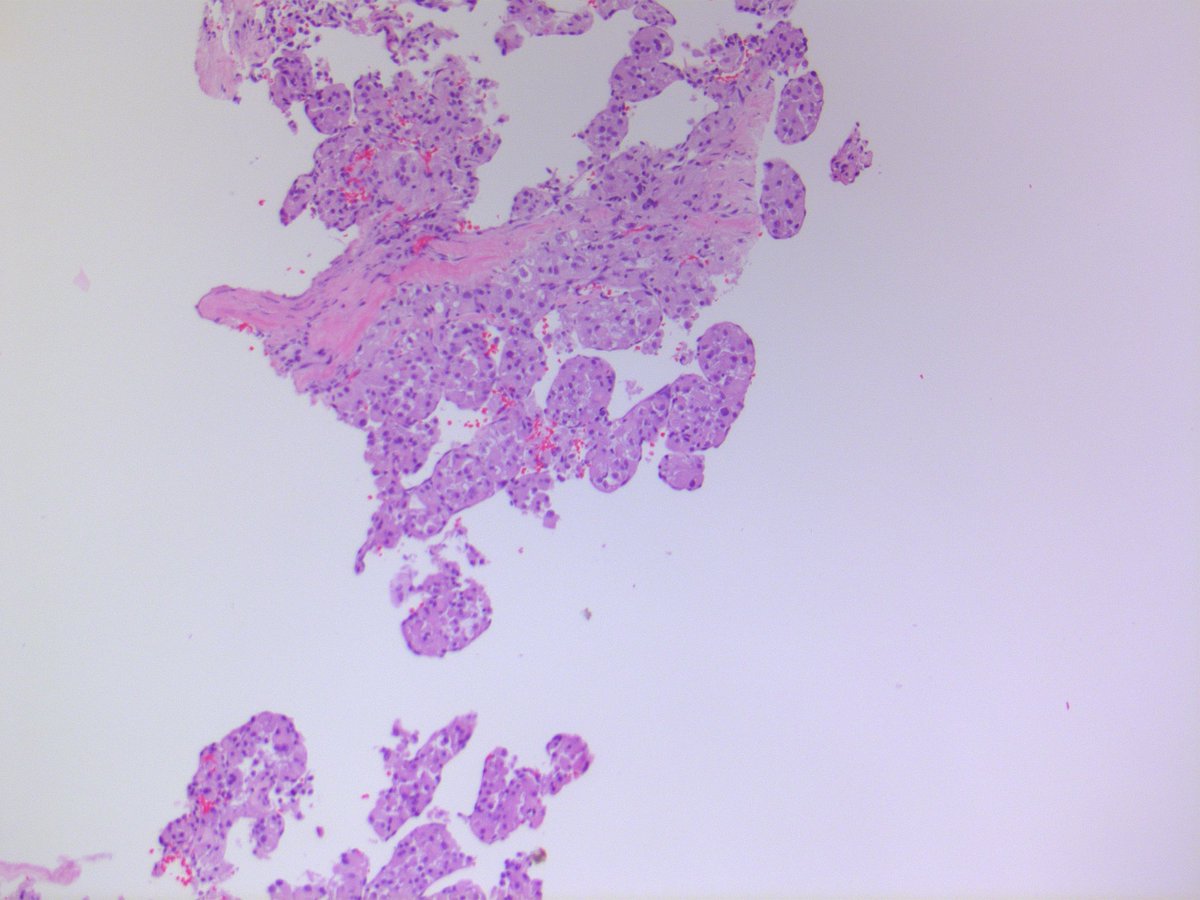



Brendan Dickson Md Alveolar Soft Part Sarcoma Ihc Tfe3 Ngs Aspscr1 Tfe3 Nb Nests Of Epithelioid Cells With Abundant Granular Cytoplasm Bland Nuclei With Macronucleoli Systemic Therapies Limited Potential Promise With Immune




Alveolar Soft Part Sarcomas Molecular Pathogenesis And Implications For Novel Targeted Therapies




Tfe3 Gene Genecards Tfe3 Protein Tfe3 Antibody



0 件のコメント:
コメントを投稿